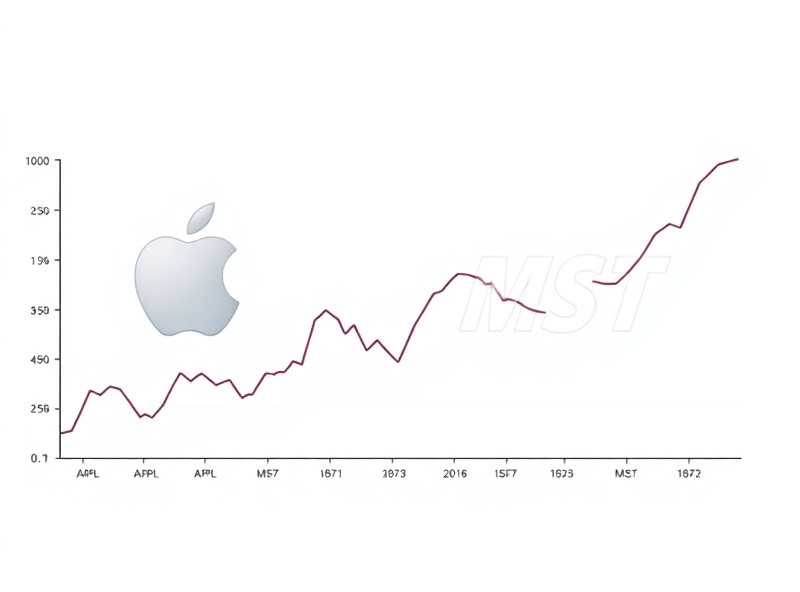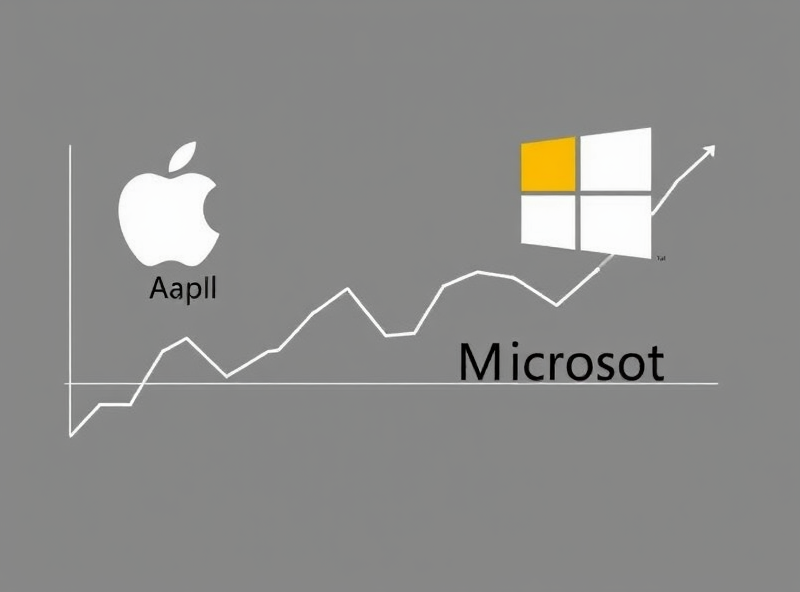
Investing in Tech Giants: A Friendly Look at Apple (AAPL) and Microsoft (MSFT) Stocks

Hello there, fellow investors! Today, let’s take a friendly stroll through the world of two tech giants that have shaped our modern lives: Apple (AAPL) and Microsoft (MSFT). These companies aren’t just names we hear every day; they represent significant opportunities and fascinating stories in the stock market. Whether you’re just starting your investment journey or looking to deepen your understanding, exploring these powerhouses is always a great idea.
Apple, known for its sleek designs and user-friendly ecosystem, has built a loyal global following. From the iPhone in your pocket to the Mac on your desk, their products are deeply integrated into millions of lives. This strong brand loyalty and consistent innovation are key factors that make AAPL a compelling stock to consider. Looking at the numbers, Apple’s market capitalization is currently around $3.01 trillion, with trailing twelve months (ttm) revenue of $400.37 billion and net income of $97.29 billion. These figures highlight the sheer scale and profitability of the company.
Microsoft, on the other hand, is a software and cloud computing behemoth. While many of us grew up using Windows and Office, Microsoft has successfully transformed itself into a leader in cloud services with Azure, gaming with Xbox, and professional networking with LinkedIn. This diversification across various high-growth sectors makes MSFT a robust and forward-looking company. Microsoft’s market cap stands at approximately $3.51 trillion, with ttm revenue of $270.01 billion and net income of $96.64 billion. Their strong position in the cloud market, in particular, is a significant driver of their value.
Why Consider Apple (AAPL) for Your Portfolio?
Apple’s strength lies in its ecosystem and brand power. Once you’re in the Apple world, it’s often hard to leave. This creates a sticky customer base that consistently upgrades to the latest devices and subscribes to services like Apple Music, Apple TV+, and iCloud. The services segment is becoming increasingly important for Apple, providing a recurring revenue stream that complements their hardware sales. Furthermore, Apple has a history of returning value to shareholders through dividends and share buybacks, which can be attractive for long-term investors. Their continued focus on innovation, including potential ventures into new areas like augmented reality or electric vehicles, keeps the growth story alive.
However, it’s also important to consider the challenges. Apple’s reliance on iPhone sales, while decreasing, is still significant. Any slowdown in smartphone demand or increased competition could impact their revenue. Supply chain issues and global economic conditions can also affect production and sales. Despite these factors, Apple’s ability to consistently deliver high-quality products and services, coupled with its massive cash reserves, positions it strongly for the future.
Exploring the Potential of Microsoft (MSFT)
Microsoft’s transformation into a cloud-first company has been incredibly successful. Azure is a major competitor to Amazon Web Services (AWS) and Google Cloud, powering businesses around the world. This shift has provided Microsoft with a stable and growing revenue source. Beyond the cloud, Microsoft’s enterprise software remains essential for businesses, and their expansion into gaming and AI further diversifies their income streams. Analysts often view Microsoft favorably, with many giving it a “Strong Buy” rating and predicting further upside potential based on average price targets.
Microsoft’s strategic acquisitions, like LinkedIn and potentially Activision Blizzard (though that had its complexities), demonstrate their commitment to expanding their reach and integrating valuable services into their ecosystem. Their focus on AI integration across their products, from Office to Azure, is also a key area for future growth. The company’s strong balance sheet and consistent profitability provide a solid foundation.
Potential challenges for Microsoft include intense competition in the cloud market, regulatory scrutiny regarding their market dominance, and the need to constantly innovate to stay ahead in the fast-paced tech world. Nevertheless, Microsoft’s diversified business model and strong leadership team make it a resilient investment option.
Comparing the Giants: AAPL vs. MSFT
When comparing Apple and Microsoft, it’s not necessarily about choosing one over the other, but understanding their different strengths. Apple excels in consumer electronics and building a tightly integrated ecosystem, while Microsoft dominates enterprise software and cloud computing. Both have massive market caps and generate substantial revenue and profit. Apple’s revenue is currently higher on a trailing twelve months basis ($400.37B vs $270.01B), but Microsoft’s market cap is slightly larger ($3.51T vs $3.01T). Both companies have strong financial health and a history of innovation.
From a technical analysis perspective, recent signals for AAPL have shown a “sell” rating for the day and week, with a “neutral” signal for the month. This highlights the short-term volatility that can occur even with large-cap stocks. For MSFT, analysts generally have a positive outlook, with a consensus “Strong Buy” rating and predicted upside potential. However, it’s crucial to remember that analyst ratings and technical signals are just one piece of the puzzle and market conditions can change rapidly.
Key Takeaways for Investors
Both Apple and Microsoft represent significant opportunities for investors interested in the technology sector. They are established leaders with strong financials, loyal customer bases, and clear strategies for future growth. Apple’s consumer ecosystem and services are major strengths, while Microsoft’s dominance in cloud computing and enterprise software provides a robust foundation. Diversification across different business segments helps both companies navigate market challenges.
Investing in individual stocks always carries risks, and past performance is not indicative of future results. It’s essential to do your own thorough research, consider your own financial goals and risk tolerance, and potentially consult with a financial advisor before making any investment decisions. However, understanding the fundamentals and outlook for companies like Apple and Microsoft is a great starting point for anyone looking to invest in the tech landscape. Happy investing!



